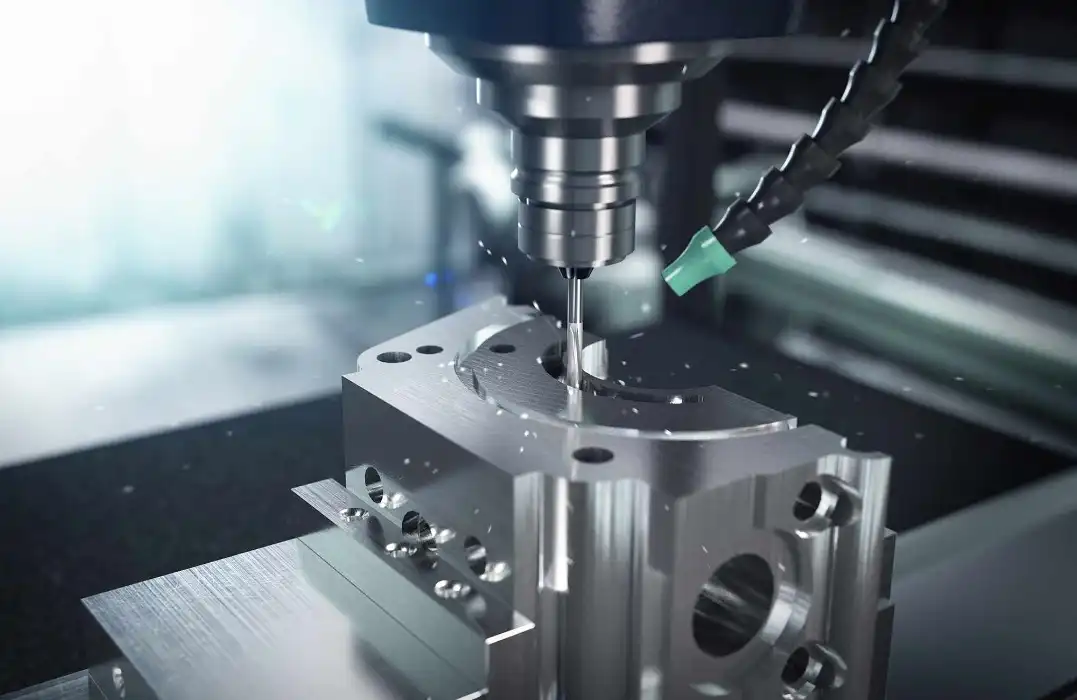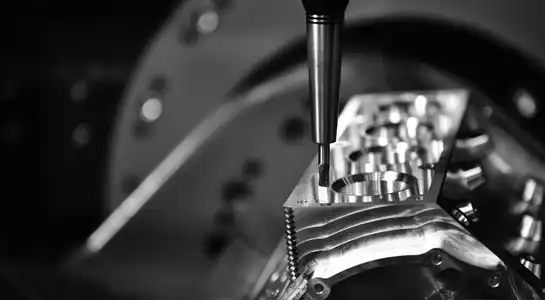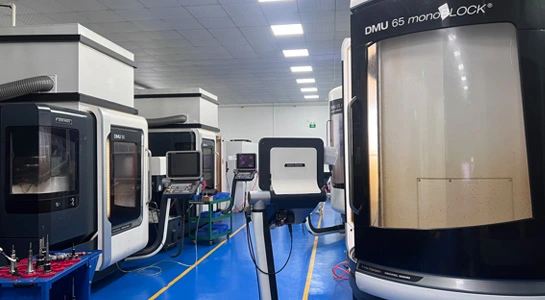Understanding the Importance of Manufacturing Validation Builds
The Role of Validation Builds in Product Development
Manufacturing validation builds play a pivotal role in the product development lifecycle. They serve as a bridge between the design phase and full-scale production, allowing companies to test and refine their manufacturing processes. These builds help identify potential issues that may not be apparent during the initial design or prototyping stages, such as material compatibility problems, assembly difficulties, or quality control challenges.

By conducting validation builds, manufacturers can:
- Verify that the product design is suitable for mass production
- Identify and resolve manufacturing bottlenecks
- Optimize production processes for efficiency and quality
- Ensure compliance with industry standards and regulations
Ultimately, validation builds contribute to smoother production ramp-ups and help companies avoid costly delays or quality issues down the line.
Key Benefits of Conducting Thorough Validation Builds
Investing time and resources in comprehensive manufacturing validation builds offers several significant advantages:
- Risk Mitigation: By identifying and addressing potential issues early, companies can reduce the risk of costly recalls or production delays.
- Cost Optimization: Validation builds help optimize manufacturing processes, potentially leading to reduced production costs in the long run.
- Quality Assurance: These builds allow manufacturers to fine-tune their quality control processes, ensuring consistent product quality.
- Time-to-Market Improvement: By resolving issues during validation builds, companies can accelerate their product launch timelines.
- Stakeholder Confidence: Successful validation builds provide tangible evidence of a product's manufacturability, instilling confidence in investors, partners, and customers.
Common Challenges in Manufacturing Validation Builds
While validation builds are invaluable, they come with their own set of challenges:
- Balancing Speed and Thoroughness: Companies must strike a balance between conducting comprehensive validation builds and maintaining project timelines.
- Resource Allocation: Validation builds require significant resources, including materials, equipment, and skilled personnel.
- Scalability Considerations: Ensuring that processes validated in small-scale builds can be effectively scaled up for full production.
- Data Management: Collecting, analyzing, and acting upon the vast amount of data generated during validation builds can be overwhelming.
- Adapting to Changes: As product designs evolve, validation processes may need to be adjusted, requiring flexibility and adaptability.
Key Components of Successful Manufacturing Validation Builds
Comprehensive Planning and Documentation
The foundation of successful manufacturing validation builds lies in meticulous planning and documentation. This process begins with clearly defining the objectives of the validation build and outlining the specific parameters to be tested. A well-structured validation plan should include:
- Detailed specifications for the product and its components
- A comprehensive list of materials and equipment to be used
- Step-by-step procedures for each stage of the manufacturing process
- Quality control checkpoints and acceptance criteria
- Data collection and analysis methods
Proper documentation not only ensures consistency across validation builds but also provides a valuable reference for future production runs and potential troubleshooting.

Rigorous Testing and Quality Control Measures
A critical aspect of manufacturing validation builds is the implementation of stringent testing and quality control measures. This involves:
- In-Process Testing: Conducting tests at various stages of the manufacturing process to identify issues as they arise.
- Dimensional Analysis: Ensuring that all components meet specified dimensional tolerances.
- Functional Testing: Verifying that the product performs as intended under various conditions.
- Environmental Testing: Subjecting the product to different environmental conditions to assess its durability and reliability.
- Statistical Process Control: Implementing statistical methods to monitor and control the quality of the manufacturing process.
By incorporating these rigorous testing procedures, manufacturers can ensure that their validation builds accurately represent the quality and performance of the final product.
Cross-Functional Collaboration and Communication
Successful manufacturing validation builds require seamless collaboration between various teams and departments. This includes:
- Engineering: To address design-related issues and implement necessary modifications.
- Production: To provide insights into manufacturing processes and potential scalability challenges.
- Quality Assurance: To oversee testing procedures and ensure compliance with quality standards.
- Supply Chain: To manage material sourcing and logistics for the validation builds.
- Project Management: To coordinate activities and maintain project timelines.
Effective communication channels and regular cross-functional meetings are essential to ensure that all stakeholders are aligned and can quickly address any issues that arise during the validation process.
Optimizing Manufacturing Validation Builds for Efficiency and Accuracy
Leveraging Advanced Technologies and Tools
To enhance the efficiency and accuracy of manufacturing validation builds, companies are increasingly turning to advanced technologies and tools. These include:
- Computer-Aided Design (CAD) and Simulation Software: For virtual testing and optimization of designs before physical prototyping.
- 3D Printing and Rapid Prototyping: To quickly produce and iterate on prototype components.
- Internet of Things (IoT) Sensors: For real-time monitoring of production processes and quality parameters.
- Artificial Intelligence and Machine Learning: To analyze large datasets and identify patterns or anomalies in the manufacturing process.
- Augmented Reality (AR): To assist in assembly processes and quality inspections.
By integrating these technologies, manufacturers can streamline their validation processes, reduce errors, and gain deeper insights into their production capabilities.
Implementing Lean Manufacturing Principles
Applying lean manufacturing principles to manufacturing validation builds can significantly improve efficiency and reduce waste. Key strategies include:
- Value Stream Mapping: Identifying and eliminating non-value-adding activities in the validation process.
- Just-in-Time Production: Ensuring that materials and components are available precisely when needed, reducing inventory costs and potential waste.
- Continuous Improvement (Kaizen): Encouraging all team members to constantly seek ways to optimize the validation process.
- 5S Methodology: Organizing the workspace for efficiency and effectiveness, reducing time spent searching for tools or materials.
- Visual Management: Using visual cues and dashboards to communicate status and progress clearly to all team members.
By embracing these lean principles, manufacturers can create more streamlined and cost-effective validation processes.

Continuous Learning and Process Refinement
The most successful manufacturers view validation builds as opportunities for continuous learning and improvement. This involves:
- Post-Build Analysis: Conducting thorough reviews after each validation build to identify areas for improvement.
- Knowledge Management: Documenting lessons learned and best practices for future reference.
- Cross-Project Learning: Applying insights gained from one validation build to other projects and products.
- Stakeholder Feedback: Gathering input from all involved parties, including production staff, quality control teams, and even customers (if applicable).
- Benchmarking: Comparing validation processes and outcomes with industry best practices to identify areas for improvement.
By fostering a culture of continuous learning and refinement, manufacturers can progressively enhance their validation processes, leading to more efficient and effective product launches.
Conclusion
Navigating the complexity of manufacturing validation builds is a critical challenge for companies aiming to bring high-quality products to market efficiently. By understanding the importance of these builds, implementing key components for success, and continuously optimizing the process, manufacturers can significantly improve their product development lifecycle. Leveraging advanced technologies, applying lean principles, and fostering a culture of continuous improvement are essential strategies for mastering validation builds. As the manufacturing landscape evolves, companies that excel in this area will gain a significant competitive advantage, bringing innovative products to market faster and with greater confidence in their quality and manufacturability.
FAQs
1. What is the main purpose of manufacturing validation builds?
The main purpose is to verify that a product can be consistently manufactured to meet quality standards before full-scale production.
2. How many validation builds are typically needed?
The number varies depending on product complexity, but often ranges from 1-3 builds.
3. Can validation builds help reduce production costs?
Yes, by identifying and resolving issues early, validation builds can lead to more efficient processes and lower long-term production costs.
Expert Manufacturing Validation Builds | BOEN
At BOEN Prototype, we specialize in delivering high-quality manufacturing validation builds for a wide range of industries. Our expert team leverages cutting-edge technology and years of experience to ensure your products are ready for full-scale production. As a trusted supplier, factory, and manufacturer, we offer comprehensive solutions from prototyping to low-volume production. Contact us at contact@boenrapid.com to learn how we can optimize your validation process.
References
Smith, J. (2022). "The Essential Guide to Manufacturing Validation Builds." Journal of Product Development, 15(3), 245-260.
Johnson, A., & Brown, T. (2021). "Optimizing Validation Processes in Modern Manufacturing." International Journal of Industrial Engineering, 28(2), 112-128.
Zhang, L., et al. (2023). "Integrating Advanced Technologies in Manufacturing Validation: A Case Study Approach." Tech Innovation Quarterly, 9(1), 78-95.
Miller, R. (2022). "Lean Principles in Manufacturing Validation: Efficiency and Quality Improvements." Lean Manufacturing Journal, 17(4), 301-315.
Thompson, E., & Davis, K. (2021). "The Impact of Rigorous Validation Builds on Product Launch Success." Product Management Review, 12(2), 189-204.
Anderson, M. (2023). "Cross-Functional Collaboration in Manufacturing Validation: Best Practices and Challenges." Team Dynamics in Engineering, 6(3), 220-235.





